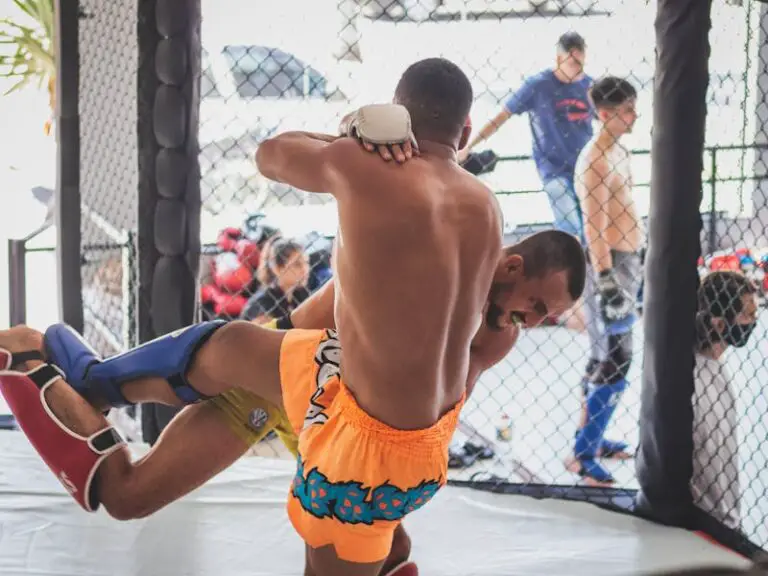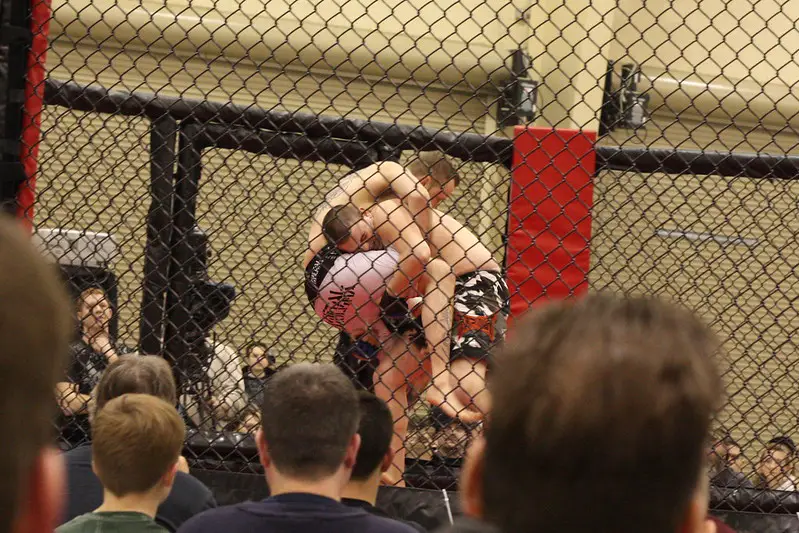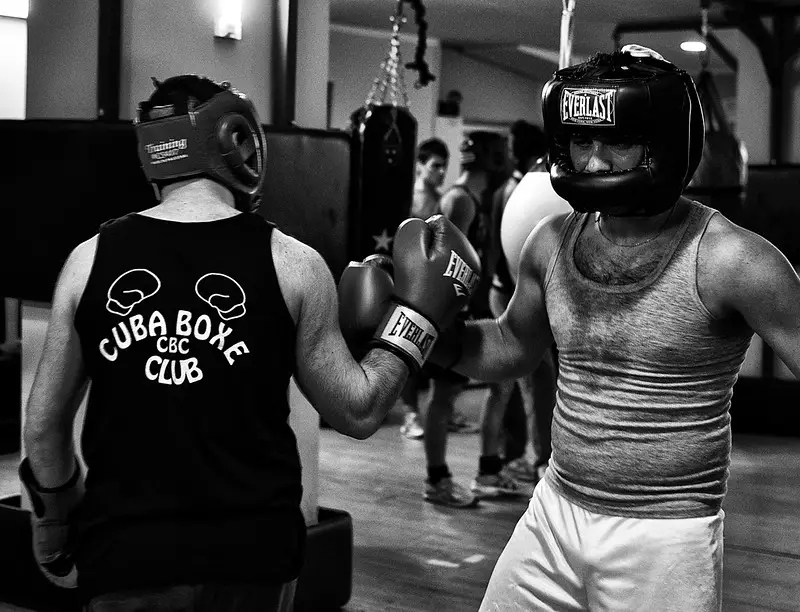Though it visually looks impressive, many people wonder how effective is Judo in MMA?
Judo is present in modern MMA and its techniques fit well within the rules of the sport. It works the best in standup grappling and clinch positions which judokas can use to secure a strong grip, establish a position, and then control or execute one of many powerful throws. Also, it represents a solid base that goes well with other styles used inside the cage.
This is a brief explanation of how effective is Judo for MMA so be sure to read the rest of this article to learn more about it.
Is Judo Allowed In MMA?
Yes, Judo’s concept and techniques fit well within the rules of cage fighting. This is because standup grappling is a big part of modern MMA. The rules enable fighters to execute all the explosive throws, trips and sweeps you can learn in Judo.
The same stands for pin holds, and manipulation of the joints on the ground. In MMA, fighters are allowed to fight on the ground using positioning, holds, pins, and catch the opponent in a submission hold to win a match. Though this grappling concept is a bit different, Judo’s skills fit well here and can help you win a match.
Of course, the dynamic and environment is a bit different meaning that the approach to execution might be different. You need to deal with striking on the feet, wrestling attacks, and different types of submissions on the ground. Also, there is no gi uniform meaning judokas must change their approach.
But overall, the majority of Judo elements are allowed in MMA, despite the differences in rules and fighters are using them regularly.
Is Judo Good For MMA?
Judo represents a solid base for MMA where explosive takedowns, clinch fighting, balance, weight distribution, and core strength are important. Over the years, many great fighters such as Ronda Rousey have used their Judo base to succeed in the sport.
But there is a reason why there haven’t been more judokas is because the system is not as practical as BJJ or wrestling. Still, this doesn’t mean Judo is not effective for MMA.
In fact, the skills and techniques you learn in judo work well in certain positions, such as inside the clinch. Judokas are masters in securing a grip and manipulating the opponent’s weight to take them down, which combined with their incredible strength makes them unstoppable in the clinch. Even wrestlers who train in takedown defense have a hard time defending against these unconventional techniques. Judokas always have tricks up in their sleeves to get what they want. These are usually sneaky trips and sweeps.
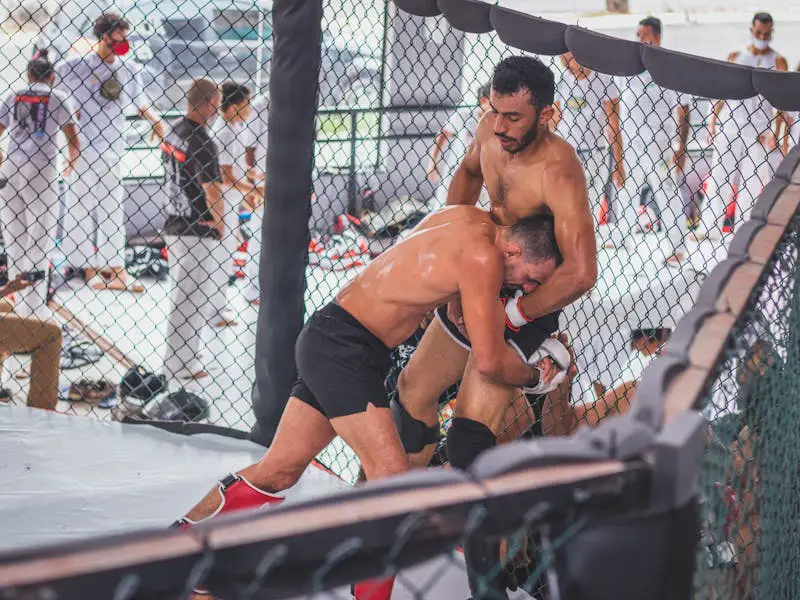
Bear in mind that, like all other martial arts, judo works well only if you combine it with other skills. Practitioners need to learn the fundamentals of striking and wrestling to get the most out of their judo base. Thus, going into the sport thinking you can win by solely relying on Judo is not going to work.
But judokas can use their base, talent, work ethic and physicality to make a quick transition. Such elite athletes are more than capable of quickly picking up the fundamentals of striking and wrestling and making their fame all-rounded.
How Effective is Judo For MMA?
Judo skills and techniques transition well into MMA. This is notably true for clinch fighting where judokas can get the most out of their strength, balance, and leverage. Here is a detailed explanation of its effectiveness:
Strong clinching game
Judo is the most effective inside the clinch. Its fighters are masters in securing a strong grip and securing a position to control and dictate the exchange. Their raw strength is superior to most fighters from other styles as well as their balance and ability to distribute weight. This opens a series of offensive and defensive moves they can use to establish further dominance.
Explosive throws and trips
Due to its heavy emphasis on grappling, the art excels in transitioning from standup to ground fighting. In judo competition, executing a perfect throw wins you the match so its fighters always look for a swift and explosive way to take the opponent down, often slamming them down in spectacular fashion. They are also good at manipulating their opponent’s weight and breaking their balance using trips, sweeps, and other tricky techniques you won’t find in wrestling for example.
Judo doesn’t just stop at throws; it extends its influence to ground control and submissions. Yes, this segment is not as advanced as in BJJ for example. But, it still provides you with solid skills to navigate on the ground and improve over time.
Strength and conditioning
What sets Judo apart is the use of grip strength, leverage, and balance. In MMA circles, they are known as one of the strongest, toughest, most durable athletes of them all. It’s hard to break or overpower a judoka during the exchanges, making them a tough matchup for any fighter regardless of the style. All of them have amazing core strength and most judo workouts target the lower body which combined with technique makes their balance impossible to break.
Overall, Judo is most effective MMA at close range where Judokas can utilize their superior strength and explosive techniques to control the opponent or take them down. It’s a comprehensive approach that continues to make a big impact in MMA.
Limitations of using Judo in MMA
Judo works well in MMA but there are also more than a few limitations. The key limitations of Judo in MMA are related to its one-dimensional approach and the fact that its techniques work well only in specific scenarios.
Too one dimensional
Firstly, Judo’s one-dimensional focus on stand-up grappling can be a double-edged sword. While it excels in throws and clinch control, it may leave practitioners vulnerable if the fight transitions to other realms. Its athletes primarily focus on executing throws from a standing position while neglecting other aspects.
No striking
Judo practitioners might face challenges against skilled strikers. The sport’s emphasis on throws means you won’t learn how to strike, leaving fighters open to punches and kicks. They might have a hard time closing the distance against a skilled striker without taking damage. Even inside the clinch, Judokas might struggle to apply their moves as they also need to deal with elbows, knees, and dirty boxing.
Limited Defense Against Wrestling Attacks
Another notable con lies in defending against proper wrestling takedowns. While Judo shares some similarities with wrestling, it may not offer the same skill level in defending attacks. As a result, Judokas can’t fully rely on their grappling defense and have to work hard on developing strong defensive wrestling.
Limited Defense Against BJJ Attacks
The same stands for ground fighting. Judo is not as advanced as other arts like BJJ. While proficient in throws and takedowns, Judokas may find themselves in trouble when the fight hits the mat. Though they practice chokes and joint locks, the ground game is far more advanced in MMA. So in order to make their judo effective in MMA, each judoka must cross-train in BJJ and other martial arts to cover all the scenarios.
Most Used Judo Throws in MMA
Judokas in MMA primarily rely on a handful of go-to throws that can be executed swiftly and without wasting too much energy. For instance, Harai Goshi, a sweeping hip throw, is a favourite due to its ability to off-balance opponents and create openings for follow-up attacks.
- Ouchi Gari — a reap or inner reap throw, is another frequently employed technique. Its simplicity and quick execution make it suitable for MMA, providing fighters with a reliable option for off-balancing opponents and initiating takedowns.
- Uchi Mata – an inner thigh throw, is a visually striking and impactful move frequently witnessed in MMA. Fighters adept at Uchi Mata use their opponent’s movements to execute a powerful throw, often resulting in a dramatic change of position.
- Seoi Nage – is a shoulder throw, valued for its versatility. Whether in the clinch or when anticipating an opponent’s movement, Seoi Nage allows fighters to unbalance and throw their adversaries with force.
- Tai Otoshi – is among the most used Judo throws in MMA due to its adaptability. It can be used in various situations, providing fighters with a reliable and unexpected option for taking their opponents to the ground.
Who is the Best Judoka in UFC (MMA)?
Judo has produced a lot of top-level MMA fighters, including some of the legendary UFC champions such as Ronda Rousey. Here is a list of some notable fighters:
- Ronda Rousey – is often considered a pioneer for women in MMA. She competed at the highest level and her biggest achievement was the Olympic bronze medal. In her UFC career, she managed to win the bantamweight title and become one of the most influential fighters of all time.
- Hector Lombard – a Cuban-Australian mixed martial artist, has a background in Judo. Lombard is known for his explosive style and powerful throws, showcasing the influence of his Judo background in the octagon.
- Yoshihiro Akiyama – also known as “Sexyama,” has a decorated Judo background, representing South Korea in the Olympics. Akiyama later transitioned to MMA and showcased his judo skills in various organizations, including the UFC.
- Yushin Okami – ba Japanese mixed martial artist, has a black belt in Judo. While he is more known for his well-rounded MMA skills, his judo background has contributed to his ability to control opponents and secure takedowns.
- Karo Parisyan – an Armenian-American judoka, was one of the early fighters to showcase the effectiveness of Judo in MMA. Known for his judo throws and submissions, Parisyan had a successful career in various MMA organizations, including the UFC.
Judo or BJJ for MMA?
Judo contributes to MMA with throws and takedowns. But BJJ’s focus on ground control and submissions is more effective in modern MMA. These two systems are very similar as BJJ origins come from Judo. However, the concept of jiu-jitsu grappling is far more in line with the demands of freestyle combat.
Its emphasis on positional control and submissions enables practitioners to dictate the pace when the fight hits the mat. Yes, Judokas are more than capable of taking the BJJ fighter down. But unlike in their sport, this is not where the fight ends. In fact, they arrive in the hostile territory where jiu-jitsu fighters have a big advantage. Their positioning and submission game is far more advanced than judokas.
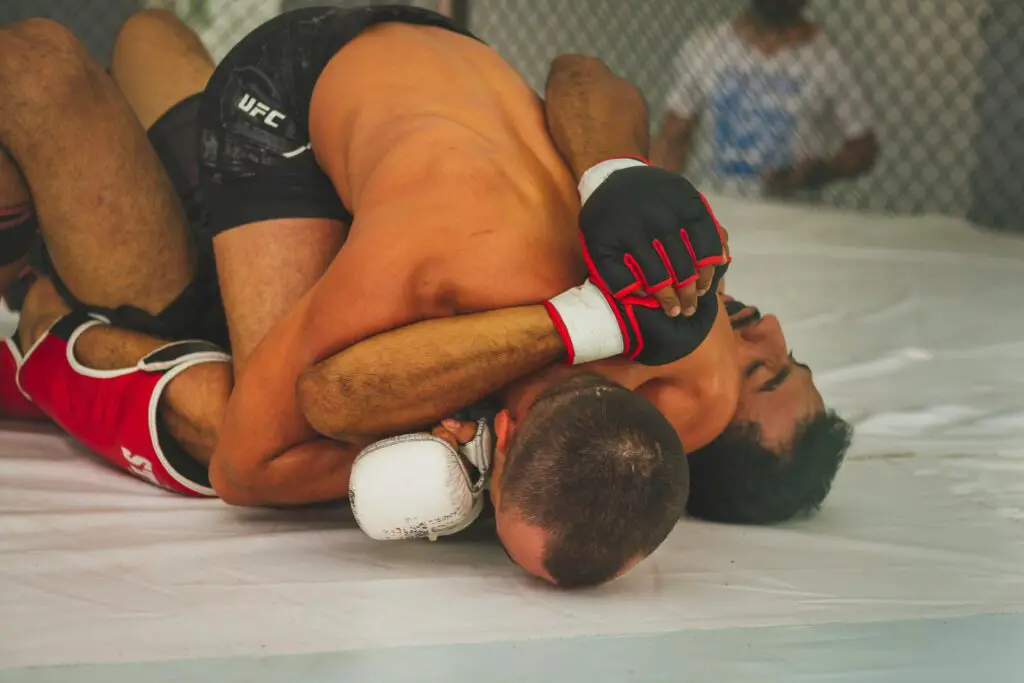
Judo shares a lot in common with BJJ on paper. However, its effectiveness is defined by strict Judo rules that emphasize throws over groundwork, making BJJ far more advanced in this segment.
In the end, the synergy between BJJ and MMA is evident in the success of fighters who have embraced its techniques, showcasing its significance in the evolving landscape of MMA.
Can Judo Be Used in A Real Fight?
Yes, Judo skills are effective in real combat and trained judokas can apply them in a street fight. It helps you neutralize the threat quickly and without causing severe injuries.
Once in a real fight, the ability to unbalance the aggressor and take them down gives you a big advantage. Most regular people don’t know how to grapple or stop a takedown. Striking and throwing a punch is a part of our natural reactions while grappling isn’t.
Stopping a takedown is all about muscle memory, exact procedure, athleticism and many other skills. It takes years of practice to learn these moves and train your instincts.
Next, Judokas can quickly transition between standup and ground scenarios. This is crucial because most street fights end up inside the clinch at one point where there is a lot of grabbing and pulling from both sides. Luckily, this scenario is where judokas feel like a fish in the water and can use this to their advantage.
However, street fights are chaotic, unpredictable, and fraught with danger. Thus, this is just a brief explanation of how effective judo can be for self-defense and the potential advantages you might have over the aggressor.
Final Thoughts On Judo In MMA
Overall, Judo is effective in MMA. This Japanese martial art has produced many great fighters and champions over the years.
However, its role in cage fighting is not as important as other conceptually similar martial arts such as wrestling or BJJ because both of these concepts are more in line with the technical and physical demands of freestyle combat.
Judo limitations include a potential vulnerability to skilled strikers, a one-dimensional focus on stand-up grappling, relative shortcomings in ground fighting, and a need for improved defenses against dedicated wrestling takedowns. Recognizing and addressing these limitations is crucial for judokas looking to succeed in the diverse landscape of MMA.
How To Defend a Takedown in MMA (5 Best Methods)
